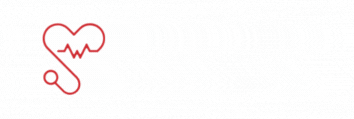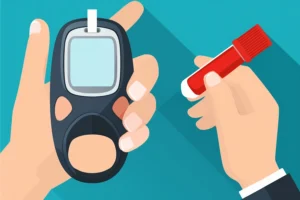Hypertension, commonly referred to as High Blood Pressure, is a major global health concern affecting over 1.2 billion adults between the ages of 30 and 79. Alarmingly, the majority of these individuals live in low- and middle-income countries, where access to proper diagnosis and treatment may be limited.
Often silent in its early stages, hypertension can quietly progress to severe complications, including heart disease, stroke and kidney failure. Despite advances in medical knowledge and public health efforts, less than half of those affected are even aware of their condition and a significant number remain untreated or inadequately managed.
Systemic arterial hypertension stands out as the leading modifiable risk factor contributing to death and disease worldwide. Each year, elevated blood pressure is responsible for over 10 million deaths globally, yet its prevalence continues to rise across all economic levels. This growing health crisis highlights the urgent need for comprehensive, population-based strategies to improve awareness, prevention and control of high blood pressure on a global scale.
In this article, you’ll learn more about hypertension including what it is, how it affects your body, the underlying causes, types, symptoms and key risk factors that contribute to its development.
What Is Hypertension (High Blood Pressure)?
Hypertension or high blood pressure, happens when the force of blood pushing against the walls of your blood vessels is consistently too high. Doctors usually measure this using two numbers:
◦ Systolic Blood pressure (SBP): The top number, which shows how hard your heart is pumping blood.
◦ Diastolic Blood pressure (DBP): The bottom number, which shows the pressure in your blood vessels when your heart rests between beats.
You are considered to have high blood pressure if:
◦ Your top number (SBP) is 140 or higher, and/or
◦ Your bottom number (DBP) is 90 or higher, measured on more than one occasion at the doctor’s office or clinic.
Types of Blood Pressure Readings:
1. Normal: Below 120/80 mm Hg
2. High-Normal: Between 130–139 (top number) or 85–89 (bottom number)- This is a warning zone. You may not need medicine yet, but lifestyle changes are highly recommended.
3. Hypertension: 140/90 mm Hg or higher- This usually needs medication and lifestyle changes.
Special Case: Isolated Systolic Hypertension
Sometimes, only the top number is high (140 or more), while the bottom number stays below 90. This is called isolated systolic hypertension, and it’s common in:
◦ Young people (like teens and young adults)
◦ Older adults (especially due to stiffening arteries with age)
Even if just one of the numbers is high, it can still be harmful over time if left untreated.
Types of Hypertensions
1.Primary (Essential) Hypertension: This is the most common type, seen in most patients. It develops gradually over time and has no clearly identified cause, although it is believed to result from a mix of genetics, lifestyle habits (like poor diet, lack of exercise), and aging.
2.Secondary Hypertension: This form affects about 10% of patients and is caused by an identifiable health condition such as kidney disease, hormone disorders, or certain medications. Newer and more thorough screening methods suggest this type might be more common than previously thought.
What Causes Blood Pressure to Rise?
The regulation of blood pressure is complex and multi-layered, involving a range of factors and body systems. Here’s a breakdown:
1.Environmental and Behavioral Factors: Diet (especially high salt), lack of physical activity, stress, alcohol and smoking can all contribute to rising blood pressure.
2. Genetics: Variations in certain genes (like single-nucleotide polymorphisms or SNPs) can increase the risk of developing hypertension. These genes affect how the body manages blood pressure.
3. Hormonal Systems: The Renin-Angiotensin-Aldosterone System (RAAS) plays a major role in blood pressure regulation. When this system becomes overactive, it causes blood vessels to tighten and the body to retain salt and water, raising blood pressure.
4. Nervous System: The sympathetic nervous system (SNS), which controls your “fight or flight” response, can also cause blood vessels to constrict and the heart to beat faster, leading to higher BP. Meanwhile, the parasympathetic nervous system (PNS) helps to lower BP by calming these responses.
5. Organs Involved:
◦ Kidneys help control blood volume and salt balance.
◦ Heart and blood vessels are responsible for pumping and carrying blood efficiently.
◦ Brain and central nervous system regulate how these systems communicate and respond to changes.
6. Vascular and Immune Mechanisms: Inflammation and changes in blood vessel function also play a role, especially in long-term (chronic) cases of high BP.
What Happens If Hypertension Is Not Controlled?
When blood pressure stays high over time, it starts to damage vital organs. This condition is called Hypertension-Mediated Organ Damage (HMOD). It can lead to:
◦ Heart failure
◦ Stroke
◦ Kidney failure
◦ Vision problems
◦ Other cardiovascular diseases (CVDs)
These risks may vary between men and women, as hormonal and genetic differences can influence how the body responds to high blood pressure.
Symptoms of Hypertension: What to Watch For
High blood pressure is often called the “silent killer.” In most cases, it doesn’t cause any obvious symptoms, which means many people may live with it for years without knowing. That’s why routine blood pressure checks are so important, especially for adults.
While most people with high blood pressure feel completely normal, very high levels of blood pressure can sometimes lead to noticeable symptoms. These might include:
◦ Severe headaches
◦ Blurred or changed vision
◦ Chest discomfort or tightness
◦ Feeling dizzy or lightheaded
◦ Shortness of breath
◦ Nausea or vomiting
◦ Pounding or irregular heartbeat
◦ Nosebleeds
◦ Ringing or buzzing in the ears
◦ Anxiety or confusion
These signs usually appear when blood pressure reaches dangerously high levels, typically 180/120 mm Hg or more, a condition known as a Hypertensive crisis. This is a medical emergency and needs immediate attention. Because symptoms are rare and often vague, many people only discover they have high blood pressure during a routine check-up or after complications like heart problems or kidney issues appear.
The only reliable way to detect high blood pressure is by measuring it. This can be done at a clinic, pharmacy or even at home with an automated BP monitor. However, having it checked by a healthcare professional is important because they can also assess your overall health and risk factors.
Key Risk Factors for Hypertension
High blood pressure or hypertension, can develop due to many lifestyle, genetic and environmental factors. Based on research and studies across various populations, the following are the major risk factors:
1.Excessive Salt Intake:
◦ Eating too much salt (more than 10g/day) increases the risk of hypertension.
◦ Asian diets, tend to be high in salt.
◦ Salt makes the body retain water, which raises blood pressure.
2.Alcohol Consumption and Smoking:
◦ Drinking alcohol and smoking tobacco (including chewing tobacco) are major modern-day risk factors.
◦ These habits are especially common in young adults and significantly raise the risk of developing high BP.
3.Obesity and High BMI:
◦ Being overweight or obese is a strong predictor of hypertension.
◦ A BMI above 25 kg/m² or a high waist-to-hip ratio increases the strain on the heart and blood vessels.
4.Poor Diet and Lack of Exercise:
◦ Diets high in fatty, oily and processed foods, along with low intake of fruits and vegetables, contribute to high BP.
◦ A sedentary lifestyle with little or no physical activity increases the risk of both obesity and hypertension.
5.Family History (Genetics):
◦ Hypertension often runs in families.
◦ If one or both parents have high BP, the chances of developing it are higher, especially if combined with unhealthy habits.
6. Age and Sex:
◦ Risk increases with age.
◦ Some studies show women in certain populations, especially those with inactive lifestyles, are more at risk.
◦ In other studies, men had higher rates, likely due to smoking and alcohol consumption.
7. Illiteracy and Low Health Awareness:
◦ Lack of education affects people’s understanding of health and lifestyle.
◦ Illiteracy is linked to poor diet, inactivity and delayed diagnosis of diseases like hypertension.
8. Socioeconomic Status:
◦ People from middle and upper-class families may have sedentary jobs and access to rich diets, increasing obesity and hypertension risk.
◦ On the other hand, people from lower-income backgrounds may lack access to nutritious food and health education, also increasing their risk.
9. Underlying Health Conditions:
Certain diseases and conditions make it more likely to develop high blood pressure. These include:
◦ Diabetes
◦ Chronic kidney disease (CKD)
◦ High cholesterol (LDL-C and triglycerides)
◦ Heart rhythm disorders like atrial fibrillation
◦ Coronary heart disease or previous heart attacks
◦ Stroke or transient ischemic attacks (TIA)
◦ Depression or chronic stress
If you have any of these, regular blood pressure monitoring is essential, even if you feel perfectly fine.
Conclusion
Hypertension continues to be a major public health challenge due to its silent nature and life-threatening complications. Understanding the causes, symptoms and risk factors is the first step toward recognizing its presence and taking timely action. Since it often shows no symptoms until damage has already occurred, routine check-ups and awareness are crucial.
In future articles, we’ll explore evidence-based strategies to prevent and manage high blood pressure, so you can take control of your health before complications arise.
References
- Thomas Ungerunger@maastrichtuniversity.nl, Claudio Borghi, Fadi Charchar, Nadia A. Khan, Neil R. Poulter, Dorairaj Prabhakaran, Agustin Ramirez et al. 2020 International Society of Hypertension Global Hypertension Practice Guidelines. Hypertension. 2020;75:6. https://www.ahajournals.org/doi/10.1161/HYPERTENSIONAHA.120.15026
- John William McEvoy, Cian P McCarthy, Rosa Maria Bruno, Sofie Brouwers, Michelle D Canavan, Claudio Ceconi, Ruxandra Maria Christodorescu, , ESC Scientific Document Group et al. 2024 ESC Guidelines for the management of elevated blood pressure and hypertension: Developed by the task force on the management of elevated blood pressure and hypertension of the European Society of Cardiology (ESC) and endorsed by the European Society of Endocrinology (ESE) and the European Stroke Organisation (ESO). European Heart Journal. 2024;45(38):3912–4018. https://academic.oup.com/eurheartj/article/45/38/3912/7741010?login=false#503299969
- Hypertension. WHO. Published on March 16, 2023. Accessed on April 07, 2025. Available from: https://www.who.int/news-room/fact-sheets/detail/hypertension#:~:text=Hypertension%20(high%20blood%20pressure)%20is,get%20your%20blood%20pressure%20checked.
- Meher M, Pradhan S, Pradhan SR. Risk Factors Associated With Hypertension in Young Adults: A Systematic Review. Cureus. 2023 Apr 12;15(4):e37467. https://pmc.ncbi.nlm.nih.gov/articles/PMC10181897/
- High blood pressure. NHS. Last reviewed on July 19, 2024. Accessed on April 7, 2025. Available from: https://www.nhs.uk/conditions/high-blood-pressure/
- Oparil S, Acelajado MC, Bakris GL, Berlowitz DR, Cífková R, Dominiczak AF, Grassi G, Jordan J, Poulter NR, Rodgers A, Whelton PK. Hypertension. Nat Rev Dis Primers. 2018 Mar 22;4:18014. https://pmc.ncbi.nlm.nih.gov/articles/PMC6477925/#S36




